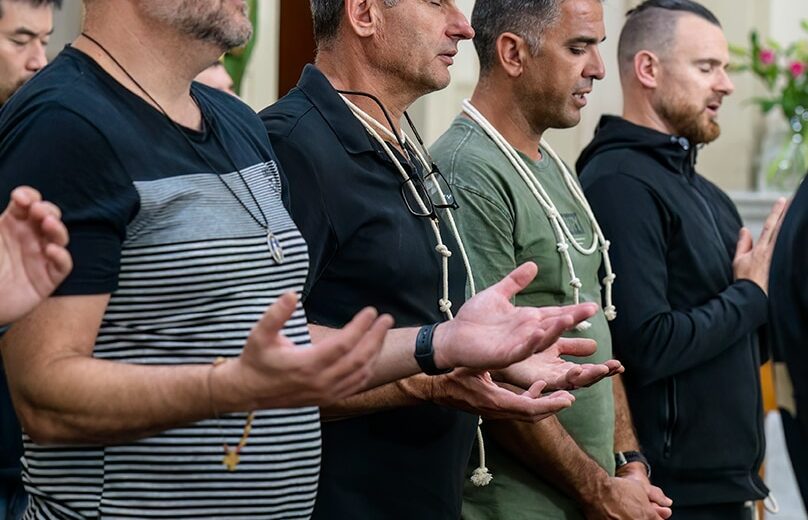
By Fr Collin Nunis
In the previous issue of The Catholic Weekly, Fr John Flader wrote about the suitability of laypeople praying in the orans posture with arms outstretched during Mass, especially during the Our Father.
Fr Flader’s view is that laypeople perhaps ought to shy away from imitating actions more properly reserved for the priest.
But the Catholic Church is larger and more liturgically diverse than just the Roman rite.
Indeed, many Eastern Catholics pray in the orans posture, even when they visit Roman rite parishes.
So let me explain why, when it is not appropriate for Latin Catholics to adopt the orans position when saying the Lord’s Prayer at Mass, it may well be appropriate for other Catholics to do so.
The orans position has its basis in Scripture, as it was the common prayer posture for the Jewish people.
In Psalm 140, we hear the psalmist say, “let my prayer rise like incense before you, my hands like the evening sacrifice,” which signifies our repentance rising with our prayers and our uplifted hands.
In the Gospels, we can only presume that Our Lord Jesus Christ lifted his hands in prayer at Gethsemane.
Additionally, in his pastoral letter to Timothy, St Paul desires that “men should pray, lifting up holy hands without anger or argument” (1 Tim 2:8).
From a theological perspective, though appropriate to the priest at Mass, the orans is not the domain of the priest alone.
For Christians, the orans posture reminds us of the extended arms of Christ on the cross, extending (as Pope Benedict XVI of blessed memory once wrote) up to God and outwards to our neighbour.
Considering that many Eastern Catholic faithful use liturgical forms and gestures rooted in ancient Jewish prayer practices, it should not be scandalous to see them engaged in the orans position when they say the Lord’s Prayer at Mass, especially if it is in their own rite.
Moreover, in addition to being the very words given to us by Our Lord himself, the Our Father affirms our divine adoption in the Spirit (c.f. Gal 4:4-7).
Hence, there should be nothing wrong with lifting our hands as children of the Father.
Now, to address the elephant in the room. As the eminent Jesuit liturgical historian, Fr Robert Taft SJ, wrote of the Lord’s Prayer in the Byzantine Liturgy, the addition of the Lord’s Prayer as a pre-communion prayer was not general practice until around the fourth or fifth centuries.
While use of the Lord’s Prayer is documented in the Didache (VIII, 2-3) and the third century apocryphal Acts of Judas Thomas, there is little evidence to suggest that the Lord’s Prayer was part of the Eucharistic Liturgy, let alone a fixed part of it.
While it might surprise some that it took this long to become a fixed part of the Liturgy, the Lord’s Prayer essentially became the preparatory pre-communion prayer for those who have prepared to receive, so that they could call God Father “with confidence and without condemnation”—a prayer still included in the Divine Liturgy of St John Chrysostom today.
However, in the West, while it was placed as a pre-communion prayer, from St Augustine on it was also understood to be the conclusion of the Eucharistic prayer prayed solely by the priest.
In fact, in Rome itself Pope St Gregory the Great moved the Lord’s Prayer to be said immediately after the Roman Canon. In other words, there is a slight difference in emphasis.
This may perhaps explain why the orans position is not an appropriate posture for the laity during the celebration of the Mass in the Roman rite, whereas it is very much appropriate for Eastern Catholics.
In fact, in the liturgical manuals of the Byzantine rite (which I celebrate in), the orans posture is considered not only “a good custom” but expected of the faithful when praying the Lord’s Prayer with the celebrant.
In responding to Fr Flader, I wish to add a disclaimer: my opinion here should not encourage parties who wish to adopt the orans posture in defiance of the liturgical prescriptions of the Roman rite.
After all: when in Rome, do as the Romans do.
Fr Collin Nunis is assistant priest of St Joseph’s Melkite Catholic Church Fairfield, Victoria.
